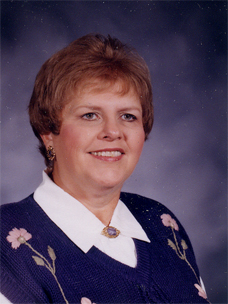|
Literacy
Lessons That Make "Sense"
Project URL: www.teachersnetwork.org/teachnetusa/nflanagan/index.htm
How
it works:
This program consists of a multi-sensory approach to learning the
alphabet, letter sounds, and a sight word vocabulary using technology.
The
curriculum accommodates visual, auditory, and kinesthetic learners by appealing to all five senses. Developmentally appropriate hands-on
materials engage the children both physically and cognitively.
Students participate in a scavenger hunt to find objects beginning with a particular letter sound. The student who finds the object takes a digital photo of it.
The photos are printed and added to a letter chart next to the
object's name. Students use the software My First Incredible Amazing
Dictionary
to find three word pictures beginning with a particular letter and use Kid Pix software to locate picture stamps that
begin with the focus letter. They stamp the pictures and the letter
and print it out. We create a book that has a page for each letter of
the alphabet. Students also highlight the focus letter or word in a typed poem and use Kid Works
to type a sight word relating to the letter. I create
emergent reading books that feature student pictures and names and
patterned text incorporating the sight word we are learning.
I have the students pose to illustrate vocabulary words. We also "eat our way
through the alphabet," making a food that relates to each
letter. Letter crackers can be used to form words. During literacy centers,
students can form play dough letters or stamp letters and/or pictures beginning with the letter. Once a
week we choose an animal whose name begins with the focus letter.
Using the Internet, students increase their
knowledge of these animals. We often employ interactive writing to
create a chart about the animals. Parents are kept informed about
the literacy curriculum and activities through our class Web site,
which features weekly newsletters and photos.
Standards addressed:
The unit addresses these state standards relating to language arts: Students distinguish and name all upper- and lower-case
letters; recognize, say, and write the common sounds of letters;
distinguish letters from words; hear and say the separate phonemes in
words; read one-syllable and often-heard words by sight; reread stories independently or as a
group; determine the meaning of unknown words (with assistance) using a
beginner's dictionary; hold books right side up; know that people read from front to
back and from left to right; compare information (e.g., recognize similarities) in texts
using prior knowledge and experience; follow simple directions;
recognize patterns in stories; dictate or write simple stories using letters, words, or pictures;
name or label objects or places; and ask questions about a topic being studied or an area of interest.
Materials
used:.
A computer with Internet access is needed along with a digital
camera; the software My First Incredible Amazing Dictionary, KidPix, and Kid
Works;
pocket charts; poems relating to alphabet letters; and highlighters
The students:
The ability levels of my students range from a few who still do
not recognize most of the alphabet letters or their sounds to several
who are reading at a beginning first grade level. Once the students
are given small group instruction on the use of the software and
digital
camera, they are able to work almost independently on the project.
Overall value:
Literacy Lessons That Make "Sense" contributes to student learning by involving the
children in the learning process. They feel valued as contributors
when they find objects during the scavenger hunt and locate words in
poems. Using a multi-sensory approach helps to reach visual, auditory,
and kinesthetic learners. Student interest is maintained through the
use of varied activities and seeing themselves in pictures and their
name in print. In the long run, this will be the basis for these
children becoming lifelong readers and writers. Parents will become
cognizant and proud of their children's literacy activities. Other teachers
may want to adopt this process because it works--my students are
learning and their interest is maintained! Also, my lesson plans
provide a systematic and sequential approach for teaching letters,
sounds, and words within a balanced literacy framework.
Tips:
If this project seems overwhelming, begin with one aspect of
it (such as the scavenger hunt) and include the other lesson
components gradually.
|

About the teacher:
Nora Flanagan has 25 years of teaching experience. She
graduated from the University of Akron with a BS and an MS in
Elementary Education.
Ms. Flanagan has taught kindergarten at Pfeiffer Elementary School
for the last 12 years, where she was selected by her colleagues as
Building Teacher of the Year in 2001 and named Educator of the
Year by the Pfeiffer PTA in 1997. She achieved National Board Teaching
Certification in the Early Childhood Generalist area in 2001. Ms. Flanagan has received grants from the Martha Holden Jennings
Foundation, Bank One, Dominion East Ohio, and Summit Education
Initiative.
E-mail:
noysynora1@msn.com
Subject
Areas:
English
Science
Technology
Grade
Levels:
K-1
|